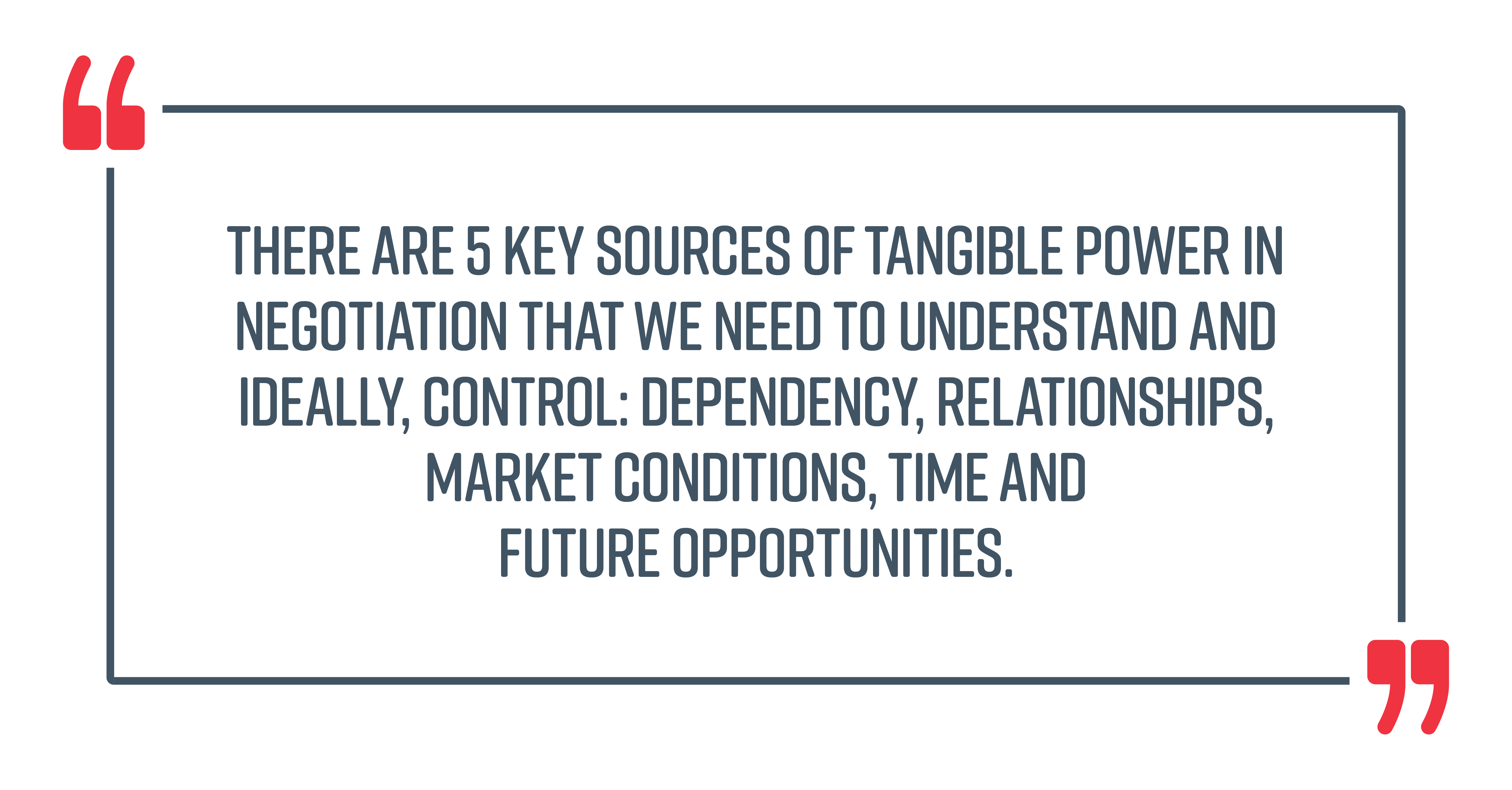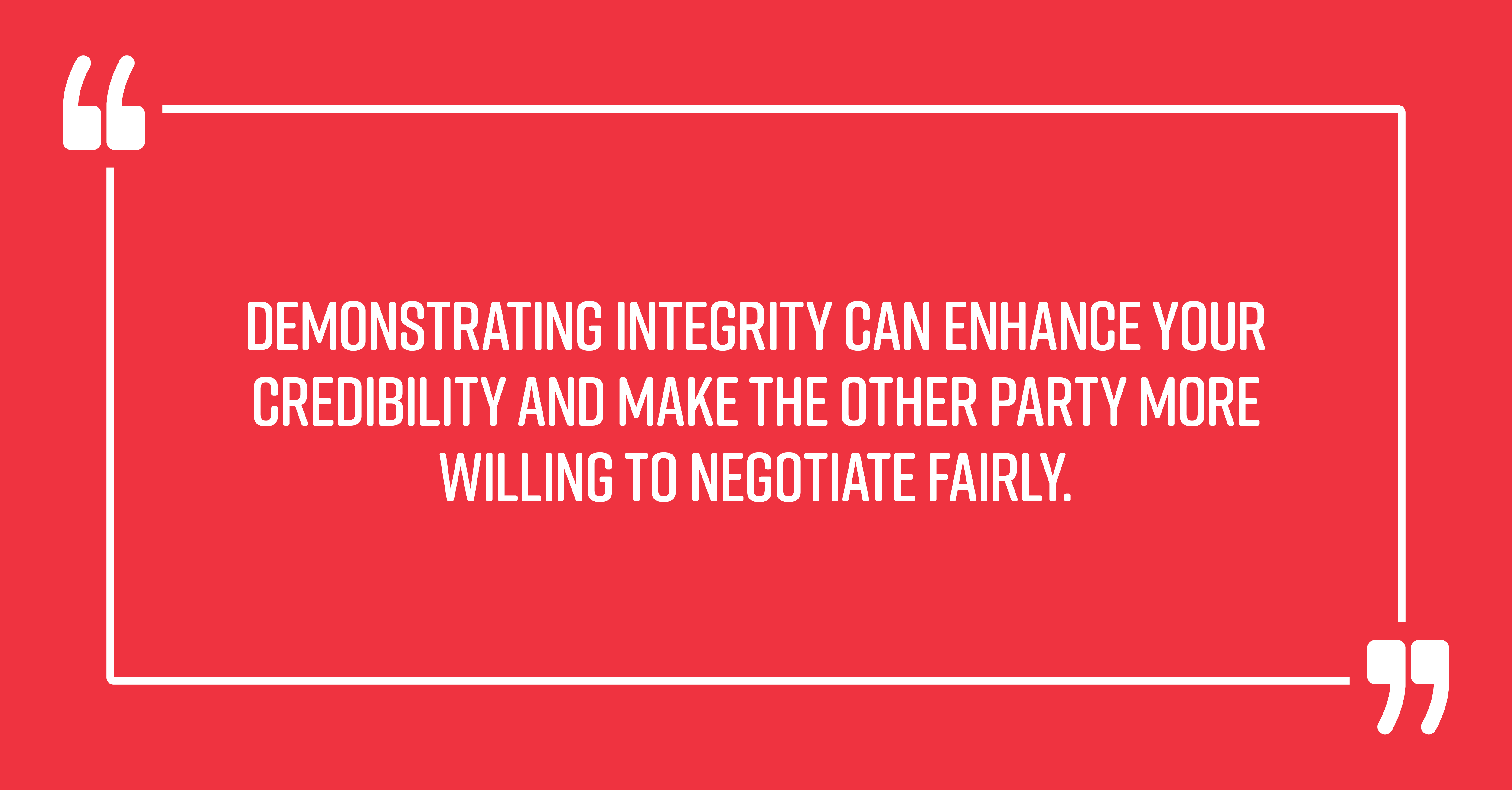Negotiations can often feel challenging, especially when external factors seem to diminish your leverage. However, with the right strategies, you can reclaim your negotiation power and achieve favourable terms. Here are 5 steps to help you navigate negotiations effectively and regain control.
Negotiation dynamics can shift unexpectedly, making it difficult to secure desired outcomes. Whether you’re negotiating a salary increase, a business contract, or any other agreement, understanding the balance of power against you is crucial. According to Hubspot (Hubspot, 2024), there are now five decision makers involved in the sales process, and these sales processes are now much longer and more complex. This presents challenges when we are trying to gain power in negotiations as the other party is more likely to back out of deals.
The key to navigating this is understanding the sources of power in negotiation and leveraging them to your advantage. By focusing on dependency, relationships, market conditions, time and future opportunities, you can regain your negotiation power.
Step 1: Understand the Balance of Power
The first step in any negotiation is to understand the balance of power. Practical application of power and deflection of the other party’s power requires us to consider the type of power as well as the potential sources of power. Power in negotiations can be categorized into two types: tangible and intangible.
Tangible Power
Tangible power sources are those that can be researched, measured, observed, and defined, with specific actions able to alter the power dynamics. To leverage tangible power effectively, it is crucial to have knowledge of the actual power held by each party. This power can be counteracted by identifying alternatives, for example, opting for a generic product instead of a branded one, thereby expanding market options, enhancing market power, and reducing the power of dependency held by the branded supplier.
There are 5 key sources of tangible power in negotiation that we need to understand and ideally, control: dependency, relationships, market conditions, time and future opportunities. To effectively harness power in all these areas, we need to acquire knowledge, gained through thorough research and analysis, and this can only really be diluted by finding alternatives. Let’s look at these 5 sources in more depth, and how we can navigate these when in a negotiation.

Dependency
Assess how dependent each party is on the other. If the other party is more dependent on you, you have more power.
Relationships
Evaluate the nature and strength of your relationships. Strong, positive relationships can give you an edge in negotiations because they can influence outcomes favourably.
Market Conditions
Consider current and anticipated market conditions. In times of inflation, market conditions can be volatile, but understanding these can help you position yourself better. For instance, if the market favours sellers and you are a seller, you have more power.
Time
Time constraints can significantly impact negotiations. If the other party has a tight deadline, you might have more leverage. Conversely, if you are under time pressure, the other party may have the upper hand. The key lies in being aware of, or at least anticipating this, so that you can adjust your negotiation style accordingly.
Future Opportunities
Think about the future opportunities that might arise from the negotiation. If there are significant potential benefits in the future, this can be a source of power.
Intangible Power
Intangible power sources on the other hand are less visible, but more felt. They shape perceptions and influence the actions of others, often subconsciously. The effective use of intangible power in negotiations relies heavily on the negotiator’s emotional competence. Intangible power can be mitigated by being aware of, and resisting, the tactics employed by the negotiator.
Of all the potential tangible and intangible sources of power in a negotiation, most fall into five headings as illustrated in the 5×5 power sources model (Figure 1). This can be a powerful tool for negotiation planning.
Figure 1: 5×5 Power Sources Model
Step 2: Thorough Research and Preparation
Preparation is crucial in any negotiation, especially during inflationary periods. The deeper and more thorough your research, the better your power assessment and negotiation outcomes.
Market Research
Conduct comprehensive research on market conditions, trends, and forecasts. Understand how inflation is affecting your industry right now and what the expectations are for the future.
Competitor Analysis
Know your competitors and their positions. This information can help you anticipate their moves and prepare counter strategies.
Internal Assessment
Evaluate your own strengths and weaknesses. Understand your position and how you can leverage it to your advantage.
Step 3: Build and Leverage Relationships
Strong relationships can be a powerful asset in negotiations. Building rapport and trust with the other party helps to foster a positive connection, increasing the likelihood of achieving more favourable terms.
Rapport Building
Invest time in building genuine relationships. Show interest in the other party’s needs and concerns as this can create a more collaborative environment and lead to better outcomes. Use body and verbal language to be intently interested in them, as rapport building lies at the heart of selling. Identify the problems or obstacles that hinder negotiation progress, then work on solving or removing these to drive agreement. Put yourself in their shoes or ask, “What is holding you back here?” Additionally, mirroring their body language subtly can provide subconscious reassurance and make them feel more at ease.
Trust and Credibility
Establish trust by being transparent and reliable. Demonstrating integrity can enhance your credibility and make the other party more willing to negotiate fairly.
Therefore, you must ensure your actions and words align consistently to build a reputation for honesty and dependability. Use clarifying questions in response to what they say to gain the advantage by distilling things down to pure fact, removing generalizations, and unsubstantiated claims. Creating an imperative to act and close, such as a time constraint or scarcity, can also encourage timely agreements while maintaining trust. Maintaining a professional demeanour and demonstrating your expertise further solidifies your position as a credible and trustworthy negotiator.

By focusing on these elements, you can effectively leverage relationships to enhance your negotiation outcomes, ensuring both parties feel satisfied with the results.
Step 4: Use Tactical Concessions
Concessions are a natural part of negotiations. However, how and when you make concessions can significantly impact the outcome.
Quantify Concessions
When giving a concession, quantify its value and emphasize this to the other party. For example, if they ask for a price reduction, ask them to specify the amount as this can help you understand their true needs and limits.
Timing of Concessions
The timing of concessions is critical in negotiations. Offer concessions strategically at moments when they will have the most positive impact on the negotiation. For instance, making a concession early on can set a positive tone, while a concession later in the negotiation can help close the deal.
Conditional Concessions
Use conditional concessions to gain something in return. For example, you might say, “I can agree to this price reduction if you can extend the contract term by six months.” This approach ensures that you are not giving away value without getting something back in return.
Small and Incremental Concessions
Make small and incremental concessions to maintain control over the negotiation process. This technique, often referred to as “nibbling,” involves asking for small additional concessions that are easy for the other party to agree to but collectively add up to significant value for you.
Step 5: Use Effective Communication Techniques
Effective communication is at the heart of successful negotiations. Here are several techniques to enhance your communication skills during negotiations:
Active Listening
Practice active listening to understand the other party’s needs and concerns fully. This involves not only hearing their words but also paying attention to non-verbal cues and the underlying emotions behind their statements.
Clarifying Questions
Use clarifying questions to ensure that you fully understand the other party’s position and to uncover any hidden issues or concerns. Questions like “Can you explain what you mean by that?” or “What would it take to make this work for you?” can provide valuable insights.
Silence
Silence can be a powerful negotiation tool. It can create a sense of discomfort for the other party, prompting them to fill the silence with additional information or concessions. Use silence strategically to gain the upper hand.
Social Proof
Leverage social proof to strengthen your position. Highlight examples of others who have agreed to similar terms or who have achieved positive outcomes by taking the same approach. Phrases like “Many of our clients have found this solution beneficial” can be persuasive.
Positive Framing
Frame your proposals positively to make them more appealing. Instead of focusing on what the other party might lose, emphasize what they stand to gain. For example, “By agreeing to this price, you’ll benefit from our premium support services at no additional cost”.
Conclusion
External factors may pose significant challenges to your negotiation efforts, but by employing these 5 steps, you can regain your negotiation power and achieve favourable outcomes. Understanding the balance of power, conducting thorough research, building strong relationships, using tactical concessions, and employing effective communication techniques, are all essential strategies for navigating negotiations successfully.
By mastering these techniques, you’ll be better equipped to handle complexities and emerge from negotiations with terms that benefit you and your organization, ensuring both parties feel satisfied with the results. Remember, negotiation is both an art and a science, and with the right approach, you can turn the tide in your favour, even in the most challenging conditions.
Written by Jonathan O’Brien, leading negotiation expert and CEO of Red Sheet Negotiation and Positive Purchasing Ltd. Jonathan works with global blue-chip organizations to help transform their negotiation capability. He also helped pioneer the Red Sheet® negotiation methodology.
The Procurement Show
If you enjoyed this blog, why not check out episode ‘How We Will Negotiate in 2050?’ of my podcast? We travel to the year 2050 to explore the rise of AI and its potential impact on the need for human involvement in negotiations. So grab a brew and listen here.



